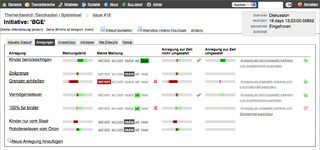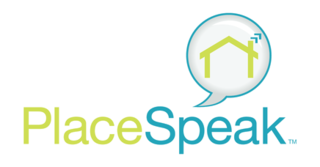Related Research Articles
A ballot is a device used to cast votes in an election and may be found as a piece of paper or a small ball used in voting. It was originally a small ball used to record decisions made by voters in Italy around the 16th century.

Usability can be described as the capacity of a system to provide a condition for its users to perform the tasks safely, effectively, and efficiently while enjoying the experience. In software engineering, usability is the degree to which a software can be used by specified consumers to achieve quantified objectives with effectiveness, efficiency, and satisfaction in a quantified context of use.
Electronic voting is voting that uses electronic means to either aid or take care of casting and counting ballots including voting time.
Electoral fraud, sometimes referred to as election manipulation, voter fraud, or vote rigging, involves illegal interference with the process of an election, either by increasing the vote share of a favored candidate, depressing the vote share of rival candidates, or both. It differs from but often goes hand-in-hand with voter suppression. What exactly constitutes electoral fraud varies from country to country, though the goal is often election subversion.
User-centered design (UCD) or user-driven development (UDD) is a framework of process in which usability goals, user characteristics, environment, tasks and workflow of a product, service or process are given extensive attention at each stage of the design process. These tests are conducted with/without actual users during each stage of the process from requirements, pre-production models and post production, completing a circle of proof back to and ensuring that "development proceeds with the user as the center of focus." Such testing is necessary as it is often very difficult for the designers of a product to understand intuitively the first-time users of their design experiences, and what each user's learning curve may look like. User-centered design is based on the understanding of a user, their demands, priorities and experiences and when used, is known to lead to an increased product usefulness and usability as it delivers satisfaction to the user. User-centered design applies cognitive science principles to create intuitive, efficient products by understanding users' mental processes, behaviors, and needs.

E-democracy, also known as digital democracy or Internet democracy, uses information and communication technology (ICT) in political and governance processes. The term is credited to digital activist Steven Clift. By using 21st-century ICT, e-democracy seeks to enhance democracy, including aspects like civic technology and E-government. Proponents argue that by promoting transparency in decision-making processes, e-democracy can empower all citizens to observe and understand the proceedings. Also, if they possess overlooked data, perspectives, or opinions, they can contribute meaningfully. This contribution extends beyond mere informal disconnected debate; it facilitates citizen engagement in the proposal, development, and actual creation of a country's laws. In this way, e-democracy has the potential to incorporate crowdsourced analysis more directly into the policy-making process.
Service design is the activity of planning and arranging people, infrastructure, communication and material components of a service in order to improve its quality, and the interaction between the service provider and its users. Service design may function as a way to inform changes to an existing service or create a new service entirely.

Civic engagement or civic participation is any individual or group activity addressing issues of public concern. Civic engagement includes communities working together or individuals working alone in both political and non-political actions to protect public values or make a change in a community. The goal of civic engagement is to address public concerns and promote the quality of the community.
User experience design defines the experience a user would go through when interacting with a company, its services, and its products. User experience design is a user centered design approach because it considers the user's experience when using a product or platform. Research, data analysis, and test results drive design decisions in UX design rather than aesthetic preferences and opinions. Unlike user interface design, which focuses solely on the design of a computer interface, UX design encompasses all aspects of a user's perceived experience with a product or website, such as its usability, usefulness, desirability, brand perception, and overall performance. UX design is also an element of the customer experience (CX), and encompasses all aspects and stages of a customer's experience and interaction with a company.

A/B testing is a user experience research methodology. A/B tests consist of a randomized experiment that usually involves two variants, although the concept can be also extended to multiple variants of the same variable. It includes application of statistical hypothesis testing or "two-sample hypothesis testing" as used in the field of statistics. A/B testing is a way to compare multiple versions of a single variable, for example by testing a subject's response to variant A against variant B, and determining which of the variants is more effective.
Youth suffrage is the right of youth to vote and forms part of the broader universal suffrage and youth rights movements. Most democracies have lowered the voting age to between 16 and 18, while some advocates for children's suffrage hope to remove age restrictions entirely.
In political science, political apathy is a lack of interest or apathy towards politics. This includes voter apathy, information apathy and lack of interest in elections, political events, public meetings, and voting.
Vote early and vote often is a generally tongue-in-cheek phrase used in relation to elections and the voting process. Though rarely considered a serious suggestion, the phrase theoretically encourages corrupt electoral activity, but is used mostly to suggest the occurrence of such corruption.
A citizens' assembly is a group of people selected by lottery from the general population to deliberate on important public questions so as to exert an influence. Other names and variations include citizens' jury, citizens' panel, people's panel, mini-publics,people's jury, policy jury, consensus conference and citizens' convention.
Jared Spool is an American writer, researcher, speaker, educator, and an expert on the subjects of usability, software, design, and research. He is the founding principal of User Interface Engineering (UIE), a research, training, and consulting firm that specializes in website and product usability. He is also an amateur magician. Spool attended Niskayuna High School in Niskayuna, NY.

LiquidFeedback is free software for political opinion formation and decision making, combining aspects of representative and direct democracy. Its most important feature is the implementation of a delegated voting system which is to establish a new form of political representation and participation that takes into account the knowledge disparity of its participants.
A Civic application is an application software designed to encourage users to participate in and learn more about government.
Civic technology, or civic tech, enhances the relationship between the people and government with software for communications, decision-making, service delivery, and political process. It includes information and communications technology supporting government with software built by community-led teams of volunteers, nonprofits, consultants, and private companies as well as embedded tech teams working within government.

PlaceSpeak is a location-based civic engagement platform designed to consult with people within specific geographic boundaries. It is a product of PlaceSpeak Inc., a Canadian technology company headquartered in Vancouver, British Columbia.
Politics and technology encompasses concepts, mechanisms, personalities, efforts, and social movements that include, but are not necessarily limited to, the Internet and other information and communication technologies (ICTs). Scholars have begun to explore how internet technologies influence political communication and participation, especially in terms of what is known as the public sphere.
References
- ↑ "Dana Chisnell". Belfer Center for Science and International Affairs. Retrieved 2020-11-09.
- ↑ "Our team | Center for civic design". civicdesign.org. Retrieved 2020-11-09.
- ↑ "The Federal Government's Technology Problem is Actually a Design Problem". Nextgov.com. Retrieved 2020-11-09.
- ↑ "Handbook of Usability Testing: How to Plan, Design, and Conduct Effective Tests, 2nd Edition | Wiley". Wiley.com. Retrieved 2020-11-09.
- ↑ "World's 100 Most Influential People in Digital Government 2019". Apolitical. Retrieved 2020-11-09.
- ↑ "Democracy is a Design ProblemJUS". uxpajournal.org. Retrieved 2020-11-10.
- ↑ "Plain Language Makes a Difference When People VoteJUS". uxpajournal.org. Retrieved 2020-11-10.
- ↑ "Talking To Strangers On The Street: Recruiting Through Intercepting People User Experience Magazine". uxpamagazine.org. Retrieved 2020-11-10.
- ↑ "How to KJ: Setting Priorities Quickly User Experience Magazine". uxpamagazine.org. Retrieved 2020-11-10.
- ↑ "Voting in New York City: Why is Ballot Design so Hard to Get Right? User Experience Magazine". uxpamagazine.org. Retrieved 2020-11-10.